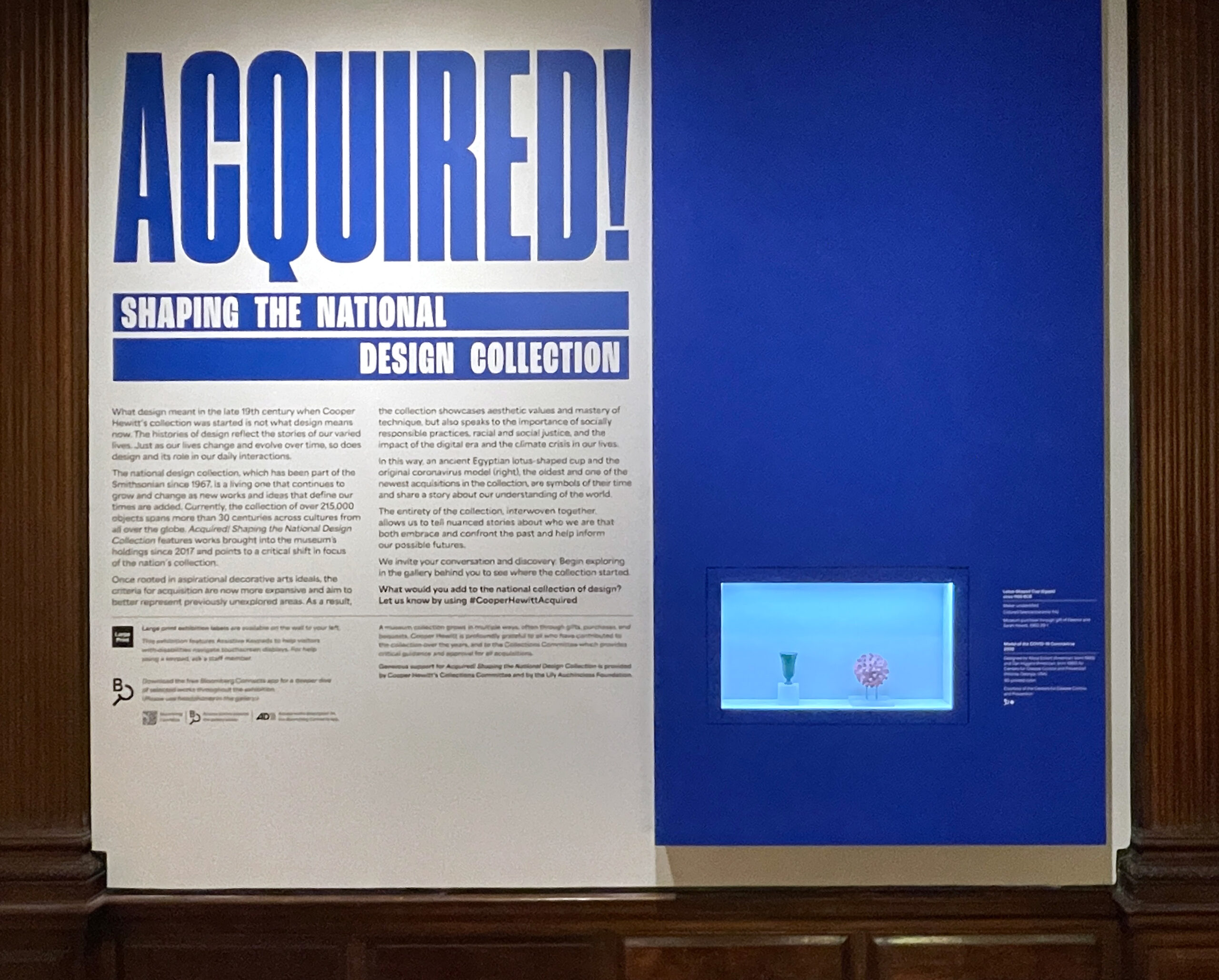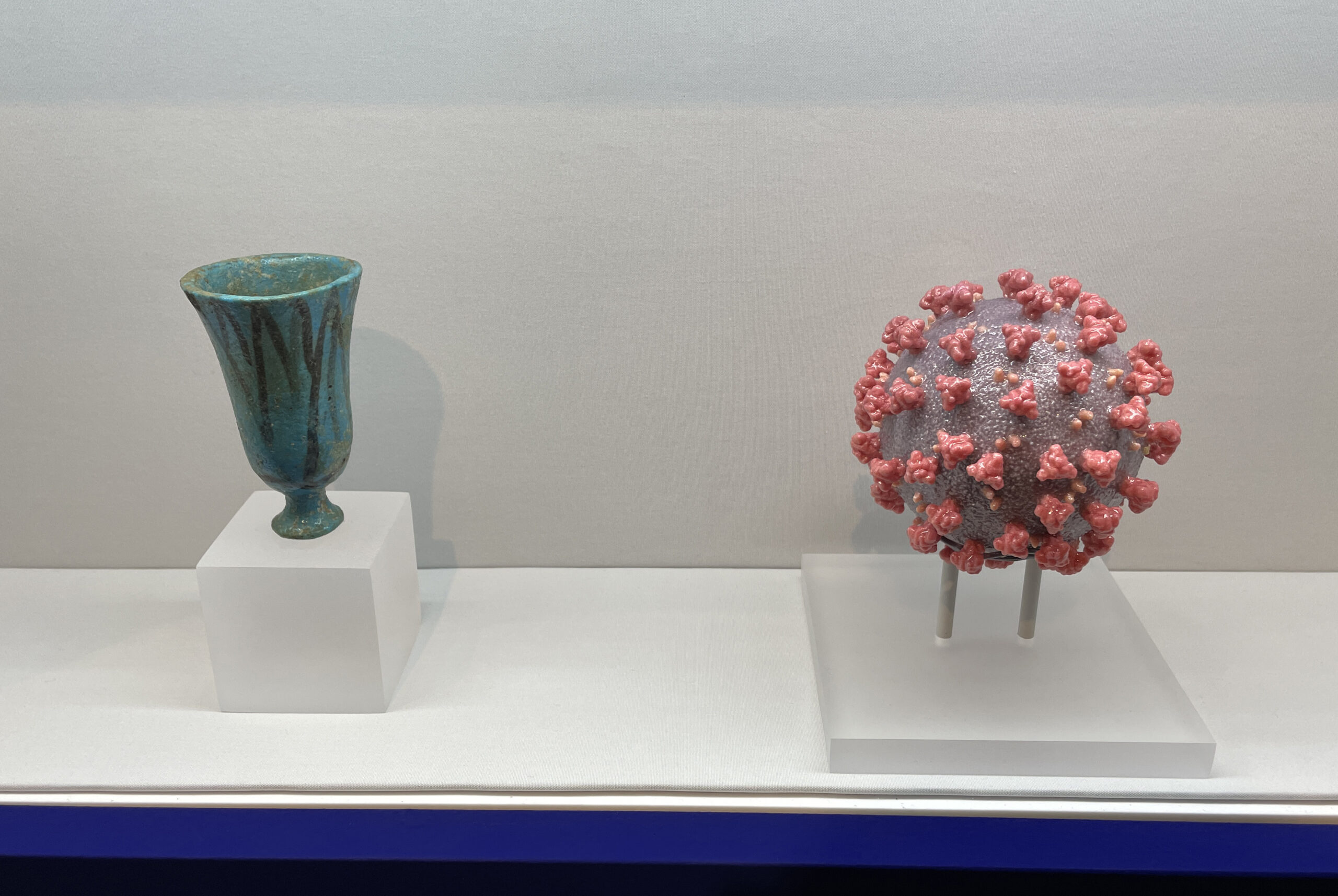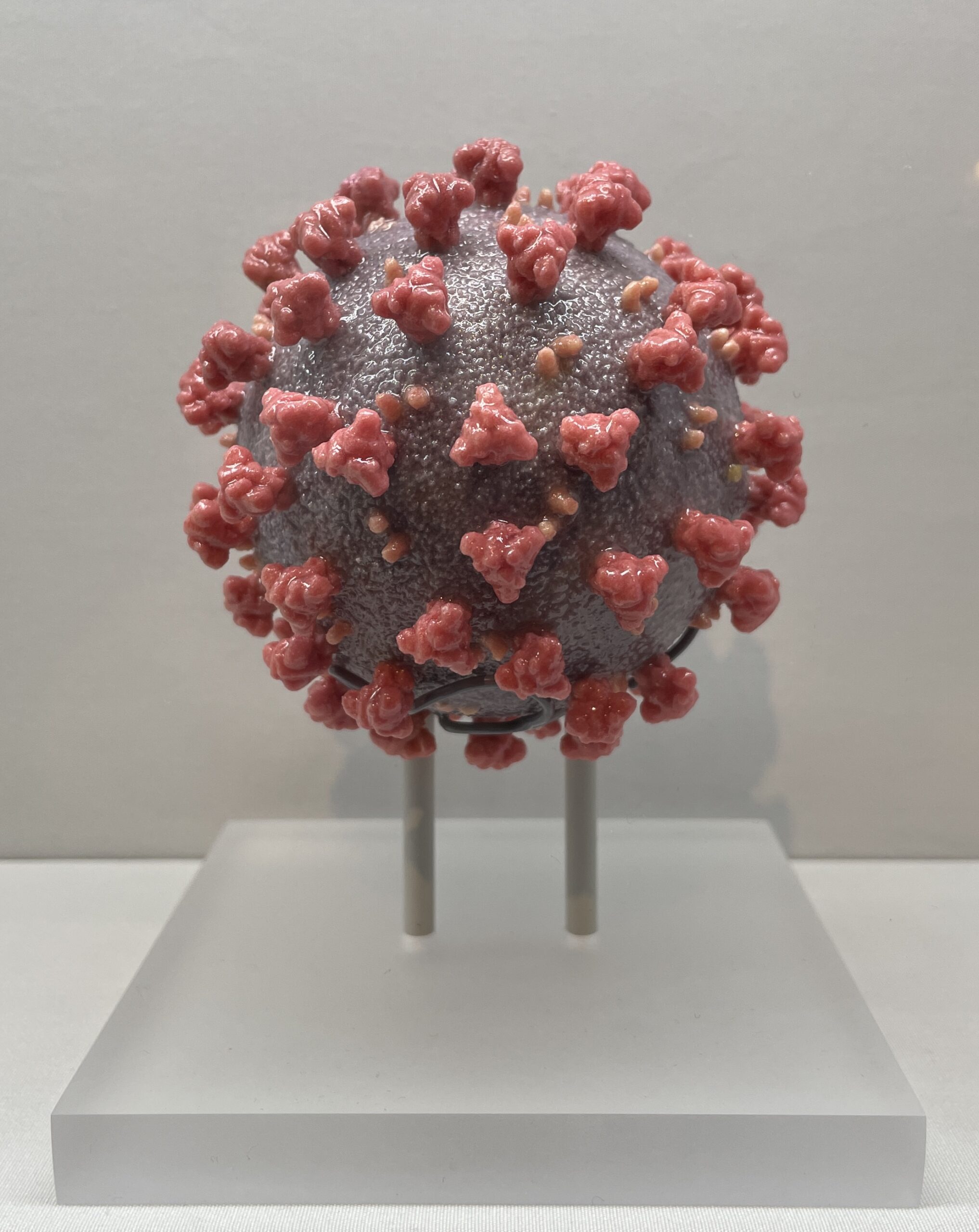Written by Jody Hanson
Accompanying the exhibition Acquired! Shaping the National Design Collection, Cooper Hewitt’s conservators offer a closer look into the process of preparing collection objects for display and long-term preservation.

Introductory wall in the exhibition Acquired!.
Included in the exhibition Acquired! is a 3D model of the COVID-19 coronavirus. A recent acquisition to the museum’s collection, it is positioned next to an Egyptian cup made of faience, which is the oldest object in the collection dating to 1100 BCE. The two objects together establish a visual comparison to demonstrate the arc of the museum’s collecting.

Egyptian cup and coronavirus model installed side by side in Acquired!.
As the exhibition curator explains, the 3D-printed model of the coronavirus was developed from the digital illustration created in January 2020 by medical illustrators at the Centers for Disease Control and Prevention (CDC). The model was fabricated as a teaching tool employed in meetings and briefings in the early days of the COVID-19 outbreak when little was known about the virus. On the model, which is 3D-printed nylon, the red nodes represent the envelope proteins and spike proteins that emerge from the viral envelope surface.
Mounting the coronavirus model in the display case was challenging due to the composition of the model. The small, protruding nodes are susceptible to breakage because of their thin attachment to the body of the model.
Using brass wire and silver solder, I created a supportive structure that avoided these protrusions and shared the overall weight of the model across multiple touchpoints. The support surfaces were painted a matching gray tone and then coated with Paraloid™ B-72. B-72 is a conservation adhesive that, once fully cured, also serves as a barrier to prevent direct contact of the painted brass to the artwork.
Due to the complications of aligning the model safely from the top by placing it directly onto the mount, instead the object was inverted and the mount was positioned along the underside, carefully turned upright, and then the two posts of the mount were slid into receiving tubes that were pre-mounted into the base.

Left: Model inverted with mount placed from above. Right: Sketch for model installation into receiving tubes pre-mounted onto the base in the case.

Coronavirus model mounted and installed in Acquired!
Jody Hanson is a mount maker at Cooper Hewitt.
The exhibition Acquired! is on view at Cooper Hewitt through August 26, 2024.
References
“What Are the Parts of a Coronavirus?” Scripps Research, https://www.scripps.edu/covid-19/science-simplified/parts-of-a-coronavirus/.